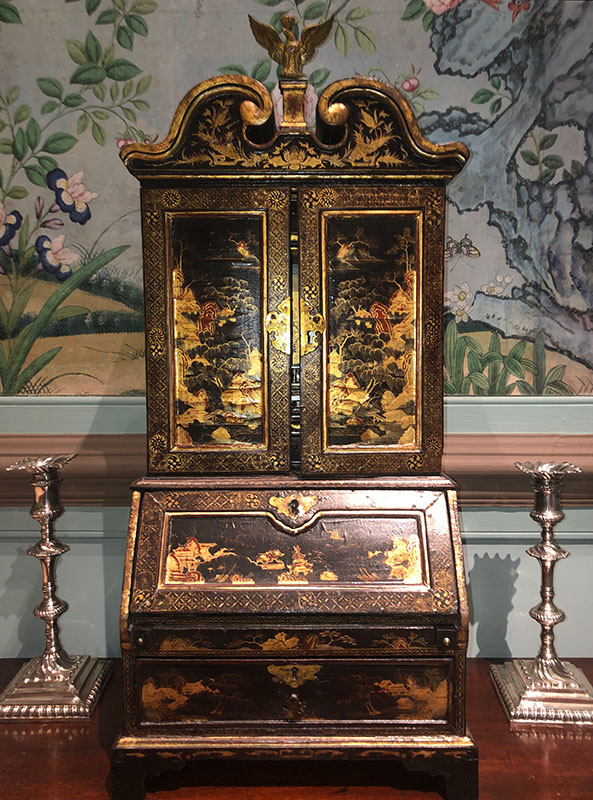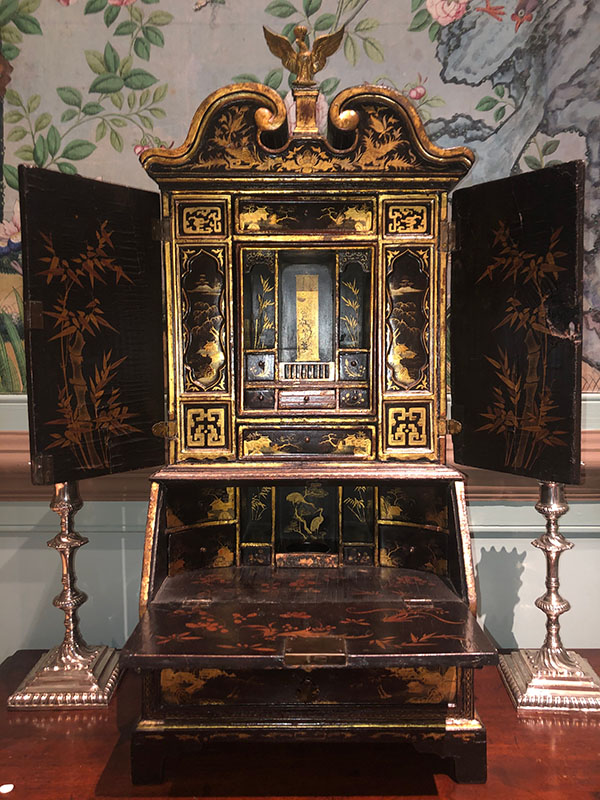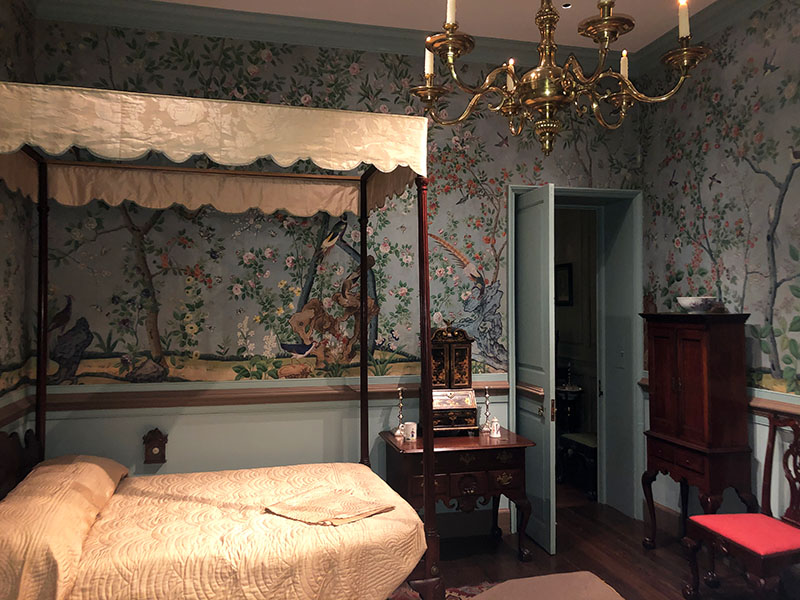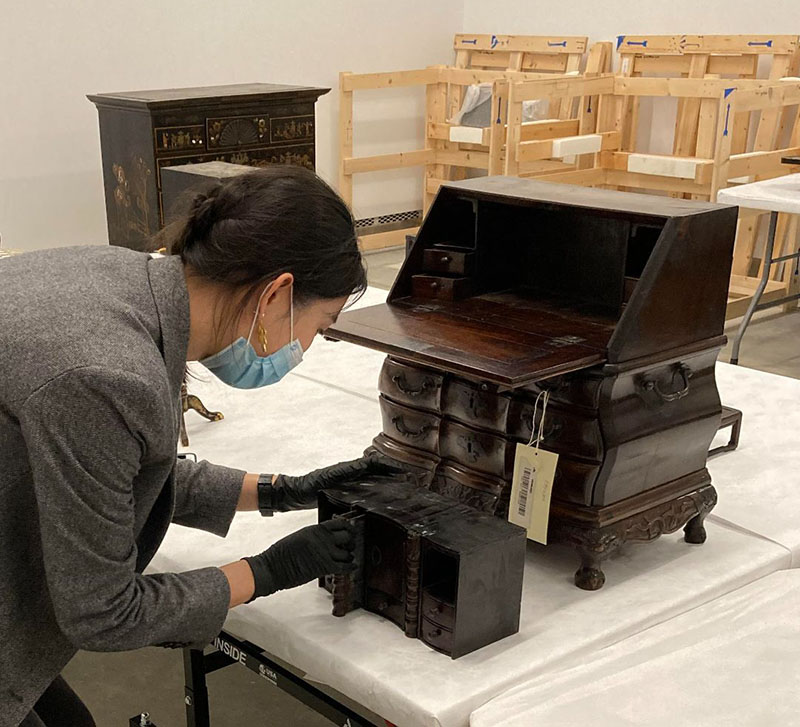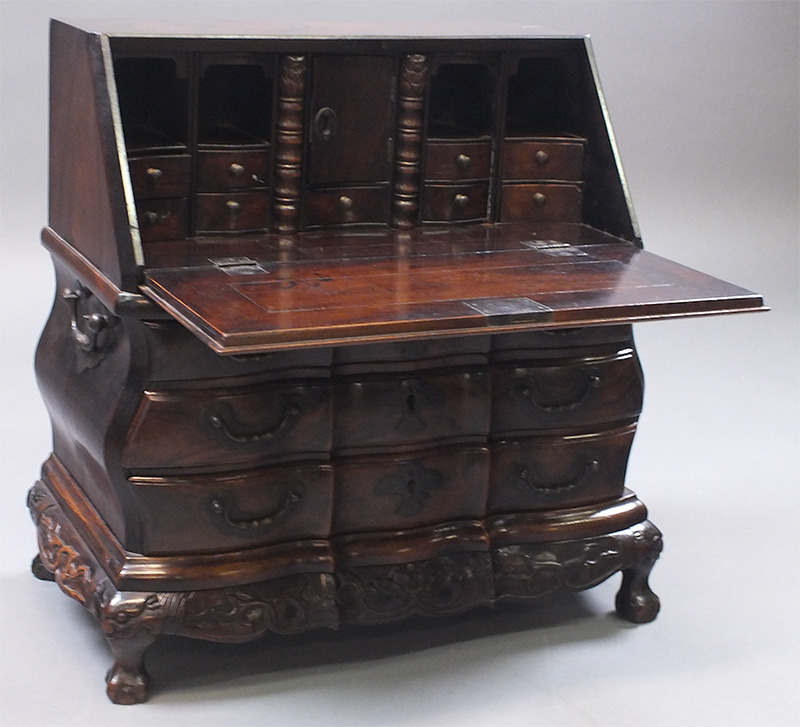Investigating a Peculiar Hybrid Chinese Export Lacquer Furniture Object
by Kelly Fu
The Decorative Arts Trust’s generous Research Grant supported my preparation for a prize-winning thesis at the Winterthur Program in American Material Culture. My project delves into a peculiar object (figures 1 and 2) that amalgamates a Chinese ancestral shrine interior and a European desk-and-bookcase exterior at Winterthur Museum, Garden, & Library.
This hybrid Chinese export lacquer furniture form has no known provenance and little background research was conducted previously, much like many Chinese export objects in the Winterthur Museum’s collection. Thanks to the Decorative Arts Trust’s funding, I was able to travel and examine objects, texts, and archives at the Peabody Essex Museum (PEM) in Salem, MA (figures 4 and 5). By comparing the desk with cognates found in the PEM’s vast material and textual archives, I realized that it represented a wide-spread type that was made for export from Canton to the European market throughout the 18th century rather than a whimsical object of special commission. The prevalence of the object type suggests that it was popular with Western consumers, who may have found its form appealing in its unfamiliarity.
Yet the birth of the form, which combines a sacred shrine unfamiliar to Western customers, cannot be entirely explained by customer demand: deeper investigation into the object prompted me to think about the role of Chinese makers in designing and influencing the outcome of their export objects. Studying Ming and Qing archival documents on furniture construction, I realized that a Chinese shrine and a European desk shared formal and structural parallels that may have prompted this hybridization. Desks and shrines were both among the most significant furniture forms in their respective cultures, and perhaps the Chinese makers created the hybrid as a celebration of their mastery of disparate cultures. I located examples in the royal collections of the Danish king, the summer palace of Queen Charlotte of England, and the homes of prosperous English merchants, and my project also sought to understand the effects of this form and the influence of its Chinese design on the elite European clients who so desired them.
Thanks to the Decorative Arts Trust and Carolyn and Michael McNamara, I was also able to speak about my research into this object at the 2022 Colonial Williamsburg Antiques Forum.
My thesis research into this object, which forms the basis of my graduate work in the East Asian influence on early modern global material culture as a history PhD student in History at Stanford University, would not have been possible without the support and aid of the Decorative Arts Trust’s summer research fellowship. I owe my most sincere thanks to the Trust for its unstinting support.
Kelly Fu is a doctoral candidate at Stanford University.
About The Decorative Arts Trust Bulletin
Formerly known as the "blog,” the Bulletin features new research and scholarship, travelogues, book reviews, and museum and gallery exhibitions. The Bulletin complements The Magazine of the Decorative Arts Trust, our biannual members publication.
Click Images to Enlarge
Did you know that clicking on the images in Bulletin posts will allow you to get a closer look? Simply click on an image, and a larger version will open in a pop-up window.








